It’s been a while since we’ve discussed survival food. And when I say survival food I’m talking about everything: from how to cook it off grid (either indoors or in the wilderness), how to store it, which foods you can stop buying and which you can find in a survival situation… there are a lot of aspects to cover on this topic.
This week we’ve stumbled on some really great, food related articles. From tips on cooking off grid, to how to approach certain survival foods, we’ve got all you want gathered here.
1. How to Make a Soda Can Stove
 “In the event of a crisis situation, you never know how you’re going to end up, and most importantly, for how long. You could be forced to live in the wild for long periods of time, and while as a prepper you probably won’t be short on supplies, it’s not just the comfort of a hot meal that makes this item extremely useful.
“In the event of a crisis situation, you never know how you’re going to end up, and most importantly, for how long. You could be forced to live in the wild for long periods of time, and while as a prepper you probably won’t be short on supplies, it’s not just the comfort of a hot meal that makes this item extremely useful.
First off, “healthwise” speaking, our bodies evolved around hot meals for almost two million years, and there’s no arguing about the benefits of a hot meal over cold canned food: resilience, satiety, and a general good state of the stomach flora with an implied decreased risk of ulcerous diseases – all good advantages for life in the wild.”
Read more on My Family Survival Plan.
2. Results of an Acorn Processing Experiment
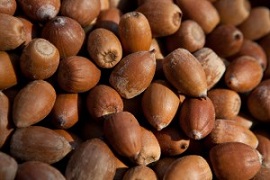 “Results of an Acorn Processing Experiment
“Results of an Acorn Processing Experiment
You will often read about some unspecified group of natives taking shelled acorns (species not mentioned) and placing them in a container of some kind (no details specified) and leaching the acorns. So, I decided to try this method (again). I took shelled acorns of Quercus rubra (northern red oak) with the kernels broken into halves, thirds, and some quarters (the fragmentation was part of the shelling process). I placed the broken kernels in a cloth sack (thin, very porous) and placed them (submerged) in a clear running stream.”
Read more on Around The Cabin.
3. 10 Things I Stopped Buying at the Store
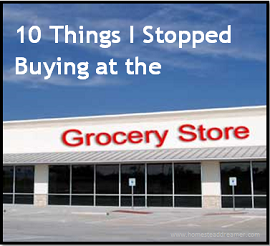 “We have made a lot of small changes in our lifestyle over the last two years or so. At the time, it doesn’t seem like much of a big deal but then six months pass and you realize how much your routine has changed. One of our big overall goals is to buy less pre-packaged items and make our own as much as possible. While we do have to buy the whole foods to then process ourselves (for no man is an island!), there are several things I realized that I stopped buying at the store all together.Instead, we make it ourselves and end up with a superior food for less money.”
“We have made a lot of small changes in our lifestyle over the last two years or so. At the time, it doesn’t seem like much of a big deal but then six months pass and you realize how much your routine has changed. One of our big overall goals is to buy less pre-packaged items and make our own as much as possible. While we do have to buy the whole foods to then process ourselves (for no man is an island!), there are several things I realized that I stopped buying at the store all together.Instead, we make it ourselves and end up with a superior food for less money.”
Read more on Homestead Dreamer.
4. 3-in-1 ESKY SLINKY Peeler Product Review
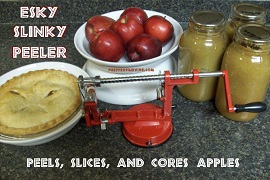 “My first experience with the Esky Sinky Peeler was at my sister-in-law’s house. We were considering what to eat for a snack when my sister remembers she recently bought a box of apples. When she suggested apples, her teenage daughter excitedly jumped up to slice the apples.
“My first experience with the Esky Sinky Peeler was at my sister-in-law’s house. We were considering what to eat for a snack when my sister remembers she recently bought a box of apples. When she suggested apples, her teenage daughter excitedly jumped up to slice the apples.
She was excited because she wanted to show my husband & I the cool way they cut their apples using the Esky Slinky Peeler. I have to admit that my husband & I were impressed and wanted our own awesome apple cutter. The machine easily peeled and thinly sliced the apples in a cool spiral which somehow (in my opinion) made the apples taste better.”
Read more on Preppers Survives.
5. How to Cook on a Woodstove: On Top and Inside
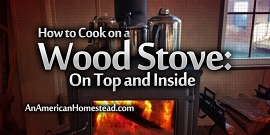 “When I think of the quintessential homestead tool, I think of a wood burning stove. A homestead house is just not complete without a fire blazing in the wood stove on cold winter nights.
“When I think of the quintessential homestead tool, I think of a wood burning stove. A homestead house is just not complete without a fire blazing in the wood stove on cold winter nights.
Transitioning to heating with wood is a wonderful place to start when learning to be self-sufficient. But nothing says homesteading like learning to cook with wood. And even though my family does not have a wood cookstove in our house, I am able to do a lot of cooking on our little wood stove meant for heating.”
Read more on An American Homestead.
This article has been written by Brenda E. Walsh for Survivopedia.


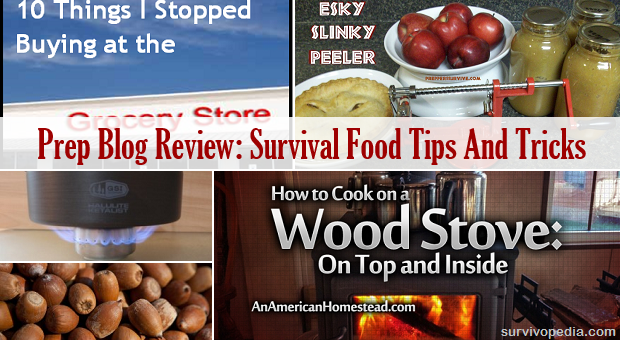







Pingback:Prep Blog Review: Survival Food Tips And Tricks | Survivalist Basics | Be Prepared For Anything! | November 29, 2014
|